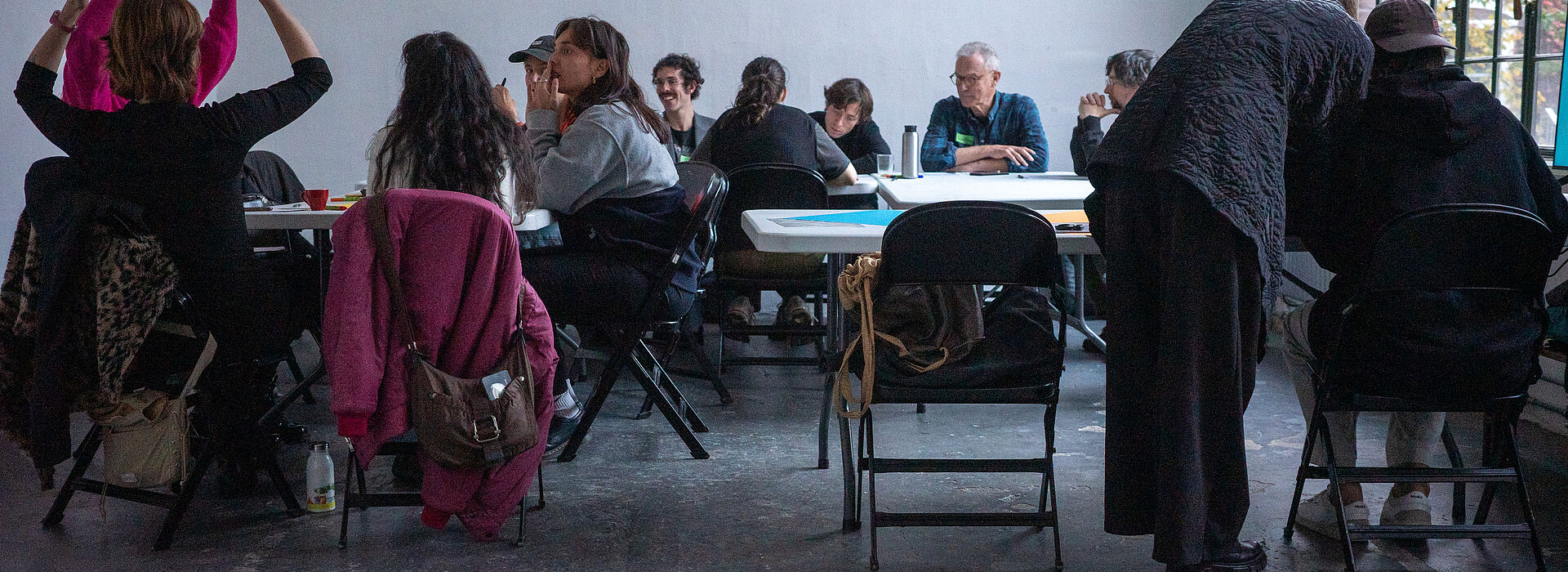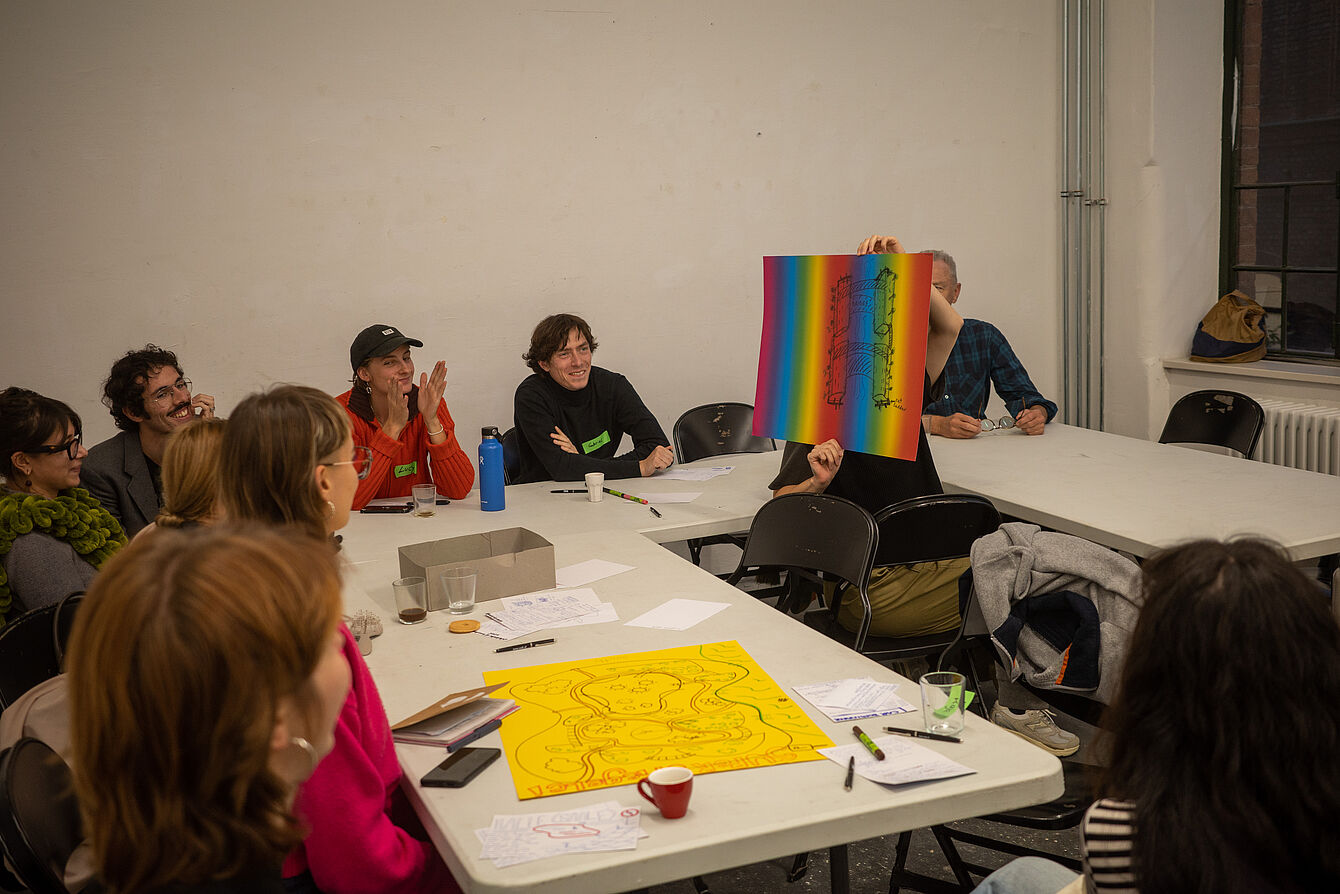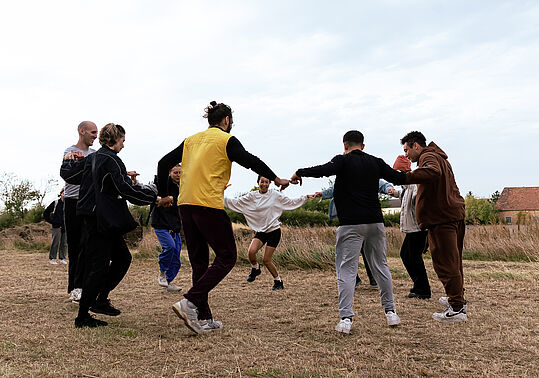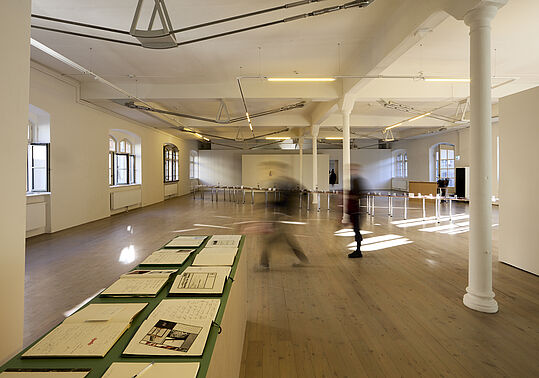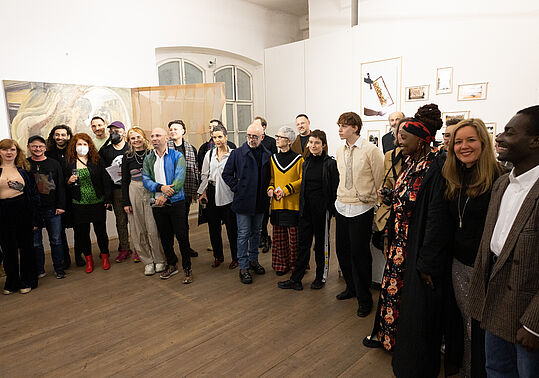The Future as Collective Practice
Reading time: approx. 3 min
What is your motivation behind engaging with the future collectively?
Natalia: The future is always created collectively, so it makes sense to talk about it with other people, to hear and visualise their ideas. This way it becomes research. Depending on the place, platform, the group or community, the outcome will vary. We travel a lot for work and it is nice to have this dialogue outside of our bubble. Doing this in the format of a workshop creates even more variety and this idea of the future gains more volume. It allows us to think about the future in very practical and local terms. For the Urbanize! workshop we asked people to think very specifically about their own neighbourhoods. This abstract concept of the future therefore stands on the concrete ground of people’s personal input.
Where do you see the advantage of virtual environments?
Natalia: A virtual environment is a way to not only visualise your imagination, but also to make it interactive. So it's not just a digital space of your own imagination, but a shared one. You can build worlds with these instruments, connecting people from different places and contexts. It gives you speed and flexibility that you wouldn't be able to reach with other means.
Yuri: The important thing is that the digital environment provides an experience very similar to the real one. After finishing the speculative phase, with its assumptions and theories, you can not only check your imaginary development, but also immerse yourself and others in it.
How do you understand the role of hope in your work about the future?
Yuri: Being pessimistic, means you are accepting you are doomed. You are accepting that crisis will end in catastrophe. To be optimistic is to look for options. We don’t think of hope as naïve but as a strategy.
And through art, you invite people to imagine those options?
Natalia: Art can sometimes provide innovation that other disciplines are not providing. It is more flexible and less bound to constraints. Art can synthesize fragments of knowledge from science, politics, all kinds of disciplines. It is the most synthetic thing. It would be utopic to claim that art is completely free, it is always in some trap of conventions – but at least it can try to be free and sometimes it succeeds.
Thank you.
Sabrina Haas is a graduate of the Social Design program at the University of Applied Arts Vienna and is currently doing an internship at kex—kunsthalle exnergasse. The internship takes place as part of the WUK Arbeitsassitenz.
Further insights into Natalia and Yuri's artistic practice here
@yuri_yefanov
@uncertainata

